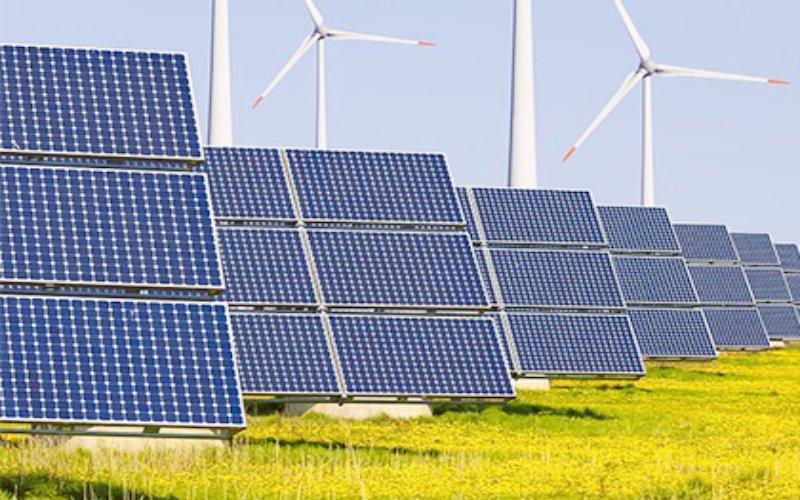Solar energy is becoming an increasingly vital part of the global shift toward renewable energy. By harnessing the power of the sun, solar energy technologies offer clean, sustainable alternatives to traditional fossil fuels. These technologies continue to evolve, improving their efficiency, cost-effectiveness, and environmental benefits. In this article, we’ll explore various solar energy technologies, their benefits, and their role in shaping a sustainable energy future.
Solar Panels: The Cornerstone of Solar Energy Technologies
When we think of solar energy, the first technology that comes to mind is solar panels. These photovoltaic (PV) cells convert sunlight directly into electricity, making them the most commonly used solar energy technology in homes, businesses, and large-scale solar farms. Solar panels are effective and efficient, with advancements in materials and design leading to better energy conversion rates and lower costs.
One key benefit of solar panels is their scalability. Whether you’re installing them on a residential rooftop or in a large solar farm, solar panels can be adapted to meet a wide range of energy needs. As the demand for clean energy grows, solar panels are expected to continue playing a central role in the transition to renewable energy.
Solar Batteries: Storing Energy for the Future
Although solar panels are an essential part of solar energy systems, they come with a limitation: they only generate electricity when the sun is shining. This intermittency is where solar batteries come into play. These batteries store excess energy produced during the day, allowing it to be used when sunlight is unavailable, such as at night or during cloudy days.
Solar batteries contribute to energy independence and reliability. They ensure that solar energy systems can function efficiently even when sunlight is scarce, making them a crucial component in maximizing the potential of solar energy technologies. The ability to store solar energy also reduces reliance on the grid, providing a more sustainable and resilient energy system.
Concentrated Solar Power (CSP): Harnessing the Power of the Sun
Concentrated Solar Power (CSP) is another innovative solar energy technology that uses mirrors or lenses to concentrate sunlight onto a small area, generating heat. This heat is then used to produce electricity. CSP systems are typically deployed in large-scale solar power plants and are capable of producing significant amounts of power.
Unlike traditional solar panels, CSP systems can store the heat they generate for later use, making them suitable for utility-scale energy generation. This capability allows CSP systems to provide power even when the sun isn’t shining, making them a reliable source of renewable energy. As CSP technology continues to improve, it could play an important role in addressing the world’s energy demands.
Perovskite Solar Cells: A New Frontier in Solar Energy Technologies
Perovskite solar cells have gained significant attention in recent years due to their potential to revolutionize solar energy. These cells are made from a unique material with exceptional light-absorbing properties, offering the potential for higher efficiency rates at a lower cost compared to traditional silicon-based solar cells.
One of the biggest advantages of perovskite solar cells is their ability to be manufactured more cheaply and efficiently. Researchers are exploring ways to scale up production, which could lead to more affordable solar energy systems for homeowners and businesses. While there are still challenges to address, such as improving their stability and long-term durability, perovskite solar cells are expected to play a significant role in the future of solar energy technologies.
Floating Solar Farms: Solar Energy Technologies on Water
In regions where land for solar farms is scarce, floating solar farms offer an innovative solution. These systems place solar panels on bodies of water, such as lakes and reservoirs, allowing solar energy generation without taking up valuable land space. Floating solar farms offer several advantages, including increased efficiency due to the cooling effect of the water and the ability to integrate them with existing infrastructure.
As technology improves, floating solar farms could become a major source of renewable energy, particularly in areas where land is limited but access to water is abundant. Countries like China, Japan, and the United States have already begun to invest in floating solar farms, demonstrating their potential as a key component of solar energy technologies.
Solar-Powered Desalination: Combining Clean Energy with Fresh Water Production
Solar-powered desalination is an emerging technology that combines solar energy with desalination processes to provide fresh water in regions where water is scarce. Desalination typically requires a large amount of energy, but by using solar power, the process becomes more sustainable and eco-friendly.
This technology is especially beneficial in coastal regions with abundant sunlight, where it can be used to provide clean water for drinking and irrigation. By pairing solar energy with desalination, we can address two pressing global challenges: the need for clean water and the transition to renewable energy. As solar-powered desalination systems continue to improve, they could play a significant role in alleviating water shortages around the world.
Solar-Powered Electric Vehicles (EVs): Charging the Future
Solar-powered electric vehicles (EVs) represent a significant development in the integration of solar energy and transportation. These vehicles are equipped with solar panels that charge their batteries, reducing the need for external charging stations and lowering overall energy consumption.
While fully solar-powered cars are still in development, some vehicles already feature solar panels that provide supplementary power, extending driving range and reducing the need to rely on external electricity sources. The ability to charge an EV while it’s parked offers a significant advantage, especially in areas with limited charging infrastructure. As solar technology advances, solar-powered EVs could become a mainstream solution, contributing to a more sustainable and low-carbon transportation system.
Solar-Powered Air Conditioning: Cooling the Future Sustainably
Air conditioning is a major consumer of energy, particularly in hot climates. Solar-powered air conditioning systems address this challenge by using solar panels to generate the electricity needed to power the units. These systems can significantly reduce the environmental impact of cooling operations and lower energy bills.
Solar thermal and photovoltaic systems are two types of solar-powered air conditioning. Solar thermal systems use solar heat to power the cooling process, while photovoltaic systems generate electricity to power conventional air conditioning units. As global temperatures rise and demand for air conditioning increases, solar-powered air conditioning presents a viable solution for reducing energy consumption while maintaining comfort.
The Future of Solar Energy Technologies: Driving Toward a Sustainable Future
The future of solar energy technologies is bright, with continuous advancements paving the way for more efficient, affordable, and widespread adoption of solar power. From innovations in solar panel design to emerging technologies like perovskite solar cells, the potential for solar energy to transform the global energy landscape is immense.
As governments, businesses, and individuals invest in solar technologies, the transition to renewable energy will become increasingly achievable. The integration of solar energy technologies into various sectors, such as transportation, water desalination, and air conditioning, will help create a more sustainable and energy-efficient future. With ongoing research and development, solar energy is set to play a leading role in meeting the world’s energy needs while reducing our carbon footprint.
Also visit on techitl.com.




